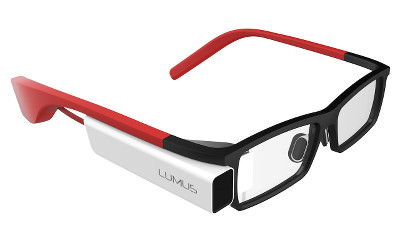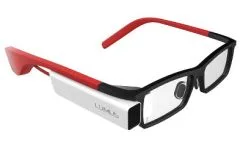
This was a quieter week for us on the news front – the holidays in the US and other regions seemed to dampen the tidal wave of news down to just a flood. We’ve been trying to get everything done ready for SID’s Display Week next week. We’ve already covered a lot of stories about the event, but there will be a lot more and there are always some surprises.
The SID is running most of the Display Week events on the West Coast of the US so that it is easier to reach from Asia, but by going to San Jose, the SID is also making it easy for product designers and developers in Silicon Valley to get along to the show to look at the latest developments in display technology. We’ll have a big team (six of our writers will be there) at the event and will be reporting for the next couple of weeks. We’ll also be posting some videos on the DisplayDaily.com website. Watch for posts on our twitter feed @Display_Daily
Over recent years, especially since the sale of Oculus, and Google’s experiments with Google Glass there has been a huge boom in R&D in near to eye (NTE) applications and the related developments in Augmented Reality (AR). This week, there has been a lot of buzz about Apple developing an app to compete directly with Google Now. Among other things, Apple has added to the long list of acquisitions it has made in the last year or two by buying a GPS company, Coherent Navigation, which claims to be able to geo-locate “within centimetres”. That could be a really helpful feature for AR.
The SID has been a good place to look at NTE in the past. Microdisplays have long been an area where the US had really innovative technology and important players, including the dominant microdisplay supplier, TI. These companies exploited the US strength in chip-making. At one time, microdisplay companies looked as though they would start to really get traction in large displays as well, by exploiting rear projection techniques. I met with Ken Werner, then editor of Information Display, one year (2000, in Long Beach, I think), and recall the conversation when we agreed that after years of being just R&D projects, it looked as though microdisplays were really going to hit the big time.
I remember visiting Compaq in Houston around that time and seeing prototype rear-projection desktop monitors and for several years the best looking large display around was a Sharp set that used the firm’s CGS-based microdisplay technology in rear projection. Sony and JVC also impressed with their LCOS-based sets.
However, rear projection technologies got blasted out of the way by flat panel technologies, especially LCD, and microdisplay has remained (DLP projection excluded) a niche technology in large displays. Pico- and embedded projectors in mobile phones and other mobile devices have struggled to have any real market impact.
 As we have reported a lot in MDM, the head mounted display market is still driven by vertical professional applications, despite the fascination with Oculus and Google Glass. Nevertheless, I remain absolutely convinced that at one point, a company (and recent history would suggest it could well be Apple) is going to get the mix between hardware, software and user experience right, and then the AR market will explode as the smartphone has. “Intelligent glasses” will be as ubiquitous one day as the smartphone is now.
As we have reported a lot in MDM, the head mounted display market is still driven by vertical professional applications, despite the fascination with Oculus and Google Glass. Nevertheless, I remain absolutely convinced that at one point, a company (and recent history would suggest it could well be Apple) is going to get the mix between hardware, software and user experience right, and then the AR market will explode as the smartphone has. “Intelligent glasses” will be as ubiquitous one day as the smartphone is now.
So, although when we split up the topics to cover at SID, I didn’t get microdisplays, I will be keeping an eye open for developments as I walk the show floor. There’s a good chance that whoever is the key designer of the product that will, eventually, ignite this market, will be doing the same next week.
Bob

